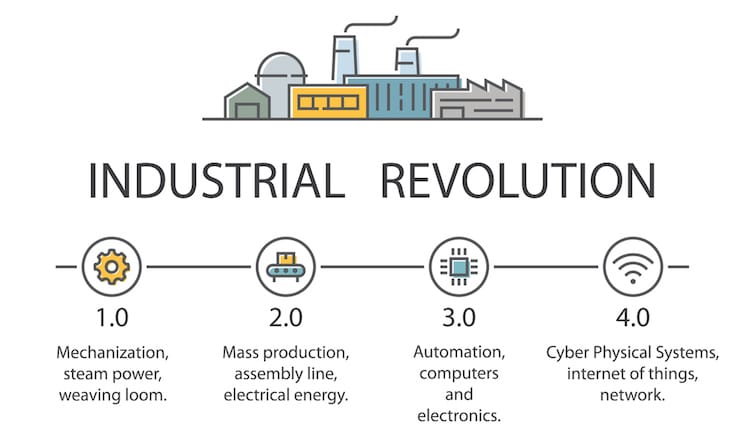
With industrialization and the move from workshops to factories, the need for shop floor control became evident. In this sense Manufacturing Executions Systems (MES) were born in Industry 2.0. Today we are operating in an Industry 4.0 world where cyber-physical systems are the path to profitable and sustainable operations. Automated systems and distributed workforce collaboration are required to produce complex products at an unprecedented quality and efficiency. The MES of the Industry 2.0 or 3.0 era is no longer sufficient in today’s I4.0 world.
The Role of Data in Industry 4.0
The underlying basis of Industry 4.0 is the importance of data as part of the entire design and production process. This information must be associated with each product and the associated workflow and quality inspections used to manufacture each product. This sequence should then feed a seamless digital thread that carries through the product’s entire lifecycle, from ideation, through manufacturing into post-delivery maintenance and operations until its final disposal or recycling. By creating each of these digital threads (or digital cloth, as you can learn more here: Tying Together All the Threads of a Digital Cloth), a manufacturer can deliver greater value. Today’s MES must not only facilitate and track manufacturing execution, but it must also use that data to do more.
Operational Excellence is Dependent on Optimization
As the coronavirus pandemic has shown us, businesses must continually evolve. Being adaptable and constantly looking for new ways to optimize due to the volatility of the global marketplace today is a requirement for survival. Achieving success in this manufacturing environment requires a culture of continuous improvement where the enterprise is always seeking to optimize performance both at a micro daily task level as well as the macro or larger business strategy level. Using technologies such as AI and machine learning, the mass of data available in operations in an I4.0 factory, optimization can become a continual process instead of a periodic “big project.”
Process Optimization Must Include Execution Excellence
Any business that is pursuing I4.0 and seeking to foster the culture of continuous improvement in the pursuit of operational excellence must then include the optimization of its shop floor processes. This means your MES must be adaptable and capable of quickly adjusting to accommodate changes that the predictive tools suggest. This means that your MES must play a central role in the manufacturing data stream.
Modern MES solutions, such as those built on a microservice architecture, can provide the real-time data to support predictive capabilities and are more than a simple manufacturing execution system, but instead becoming more of a manufacturing optimization system.





